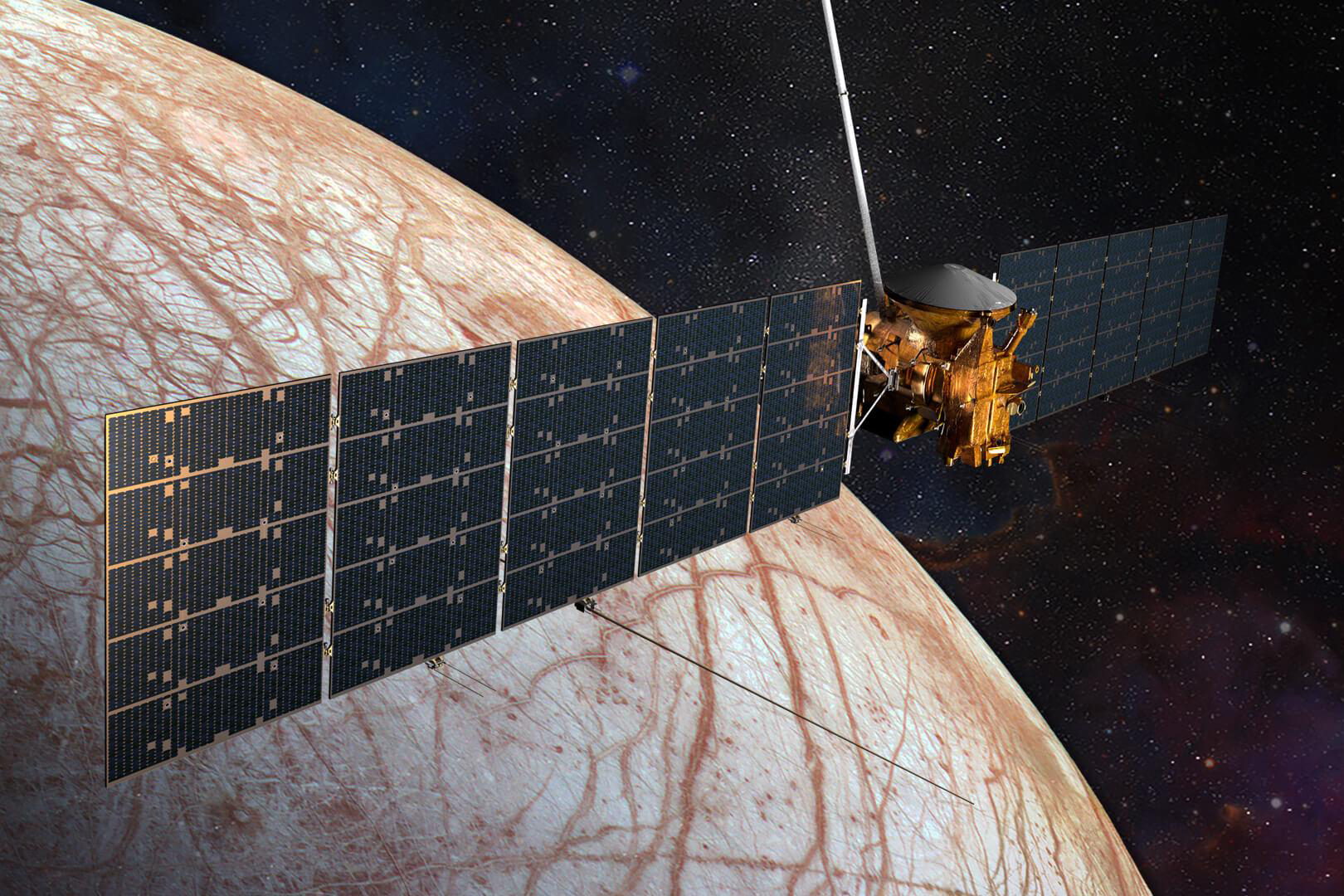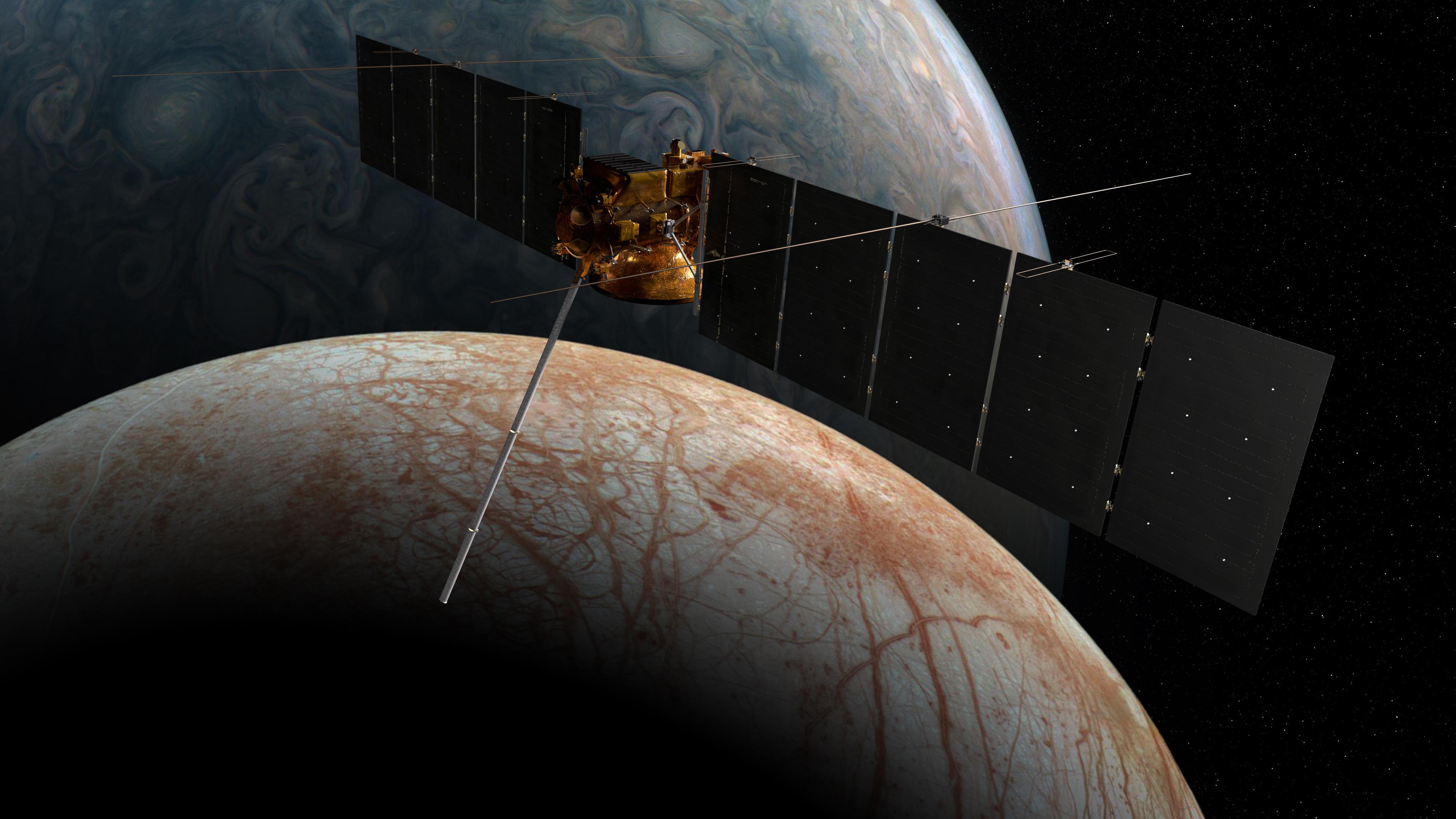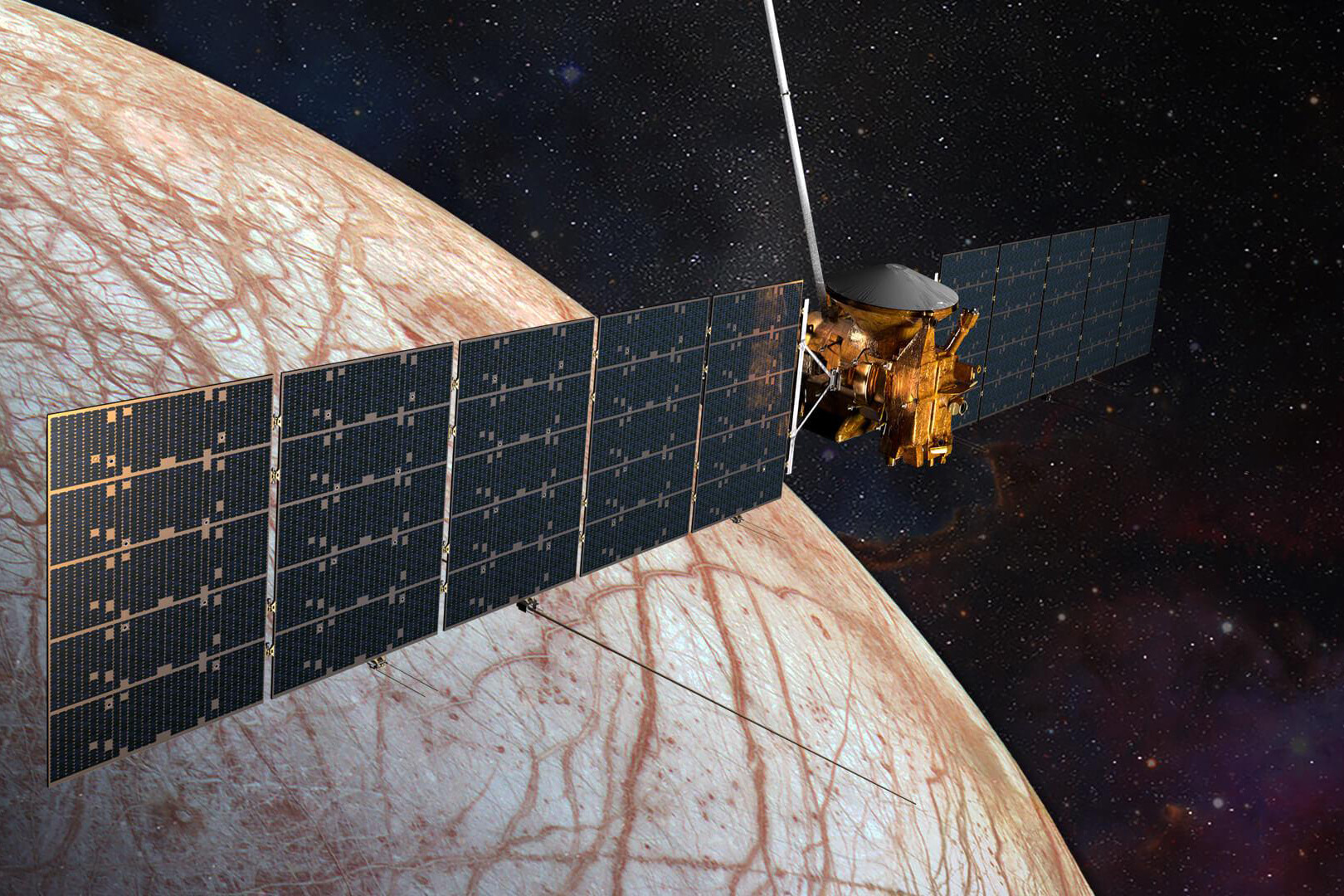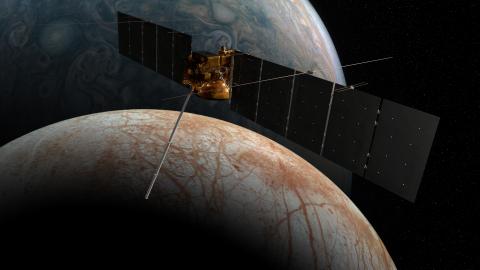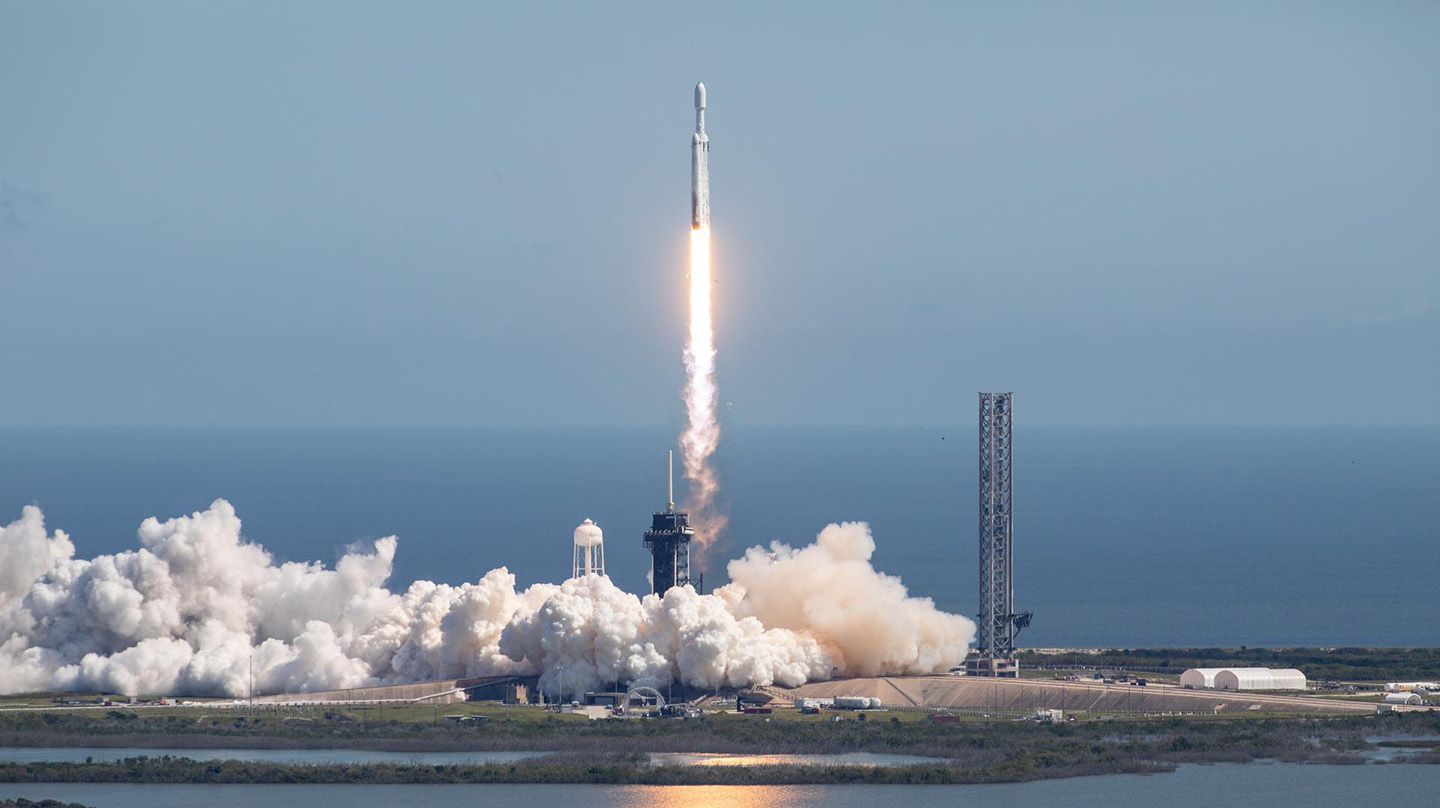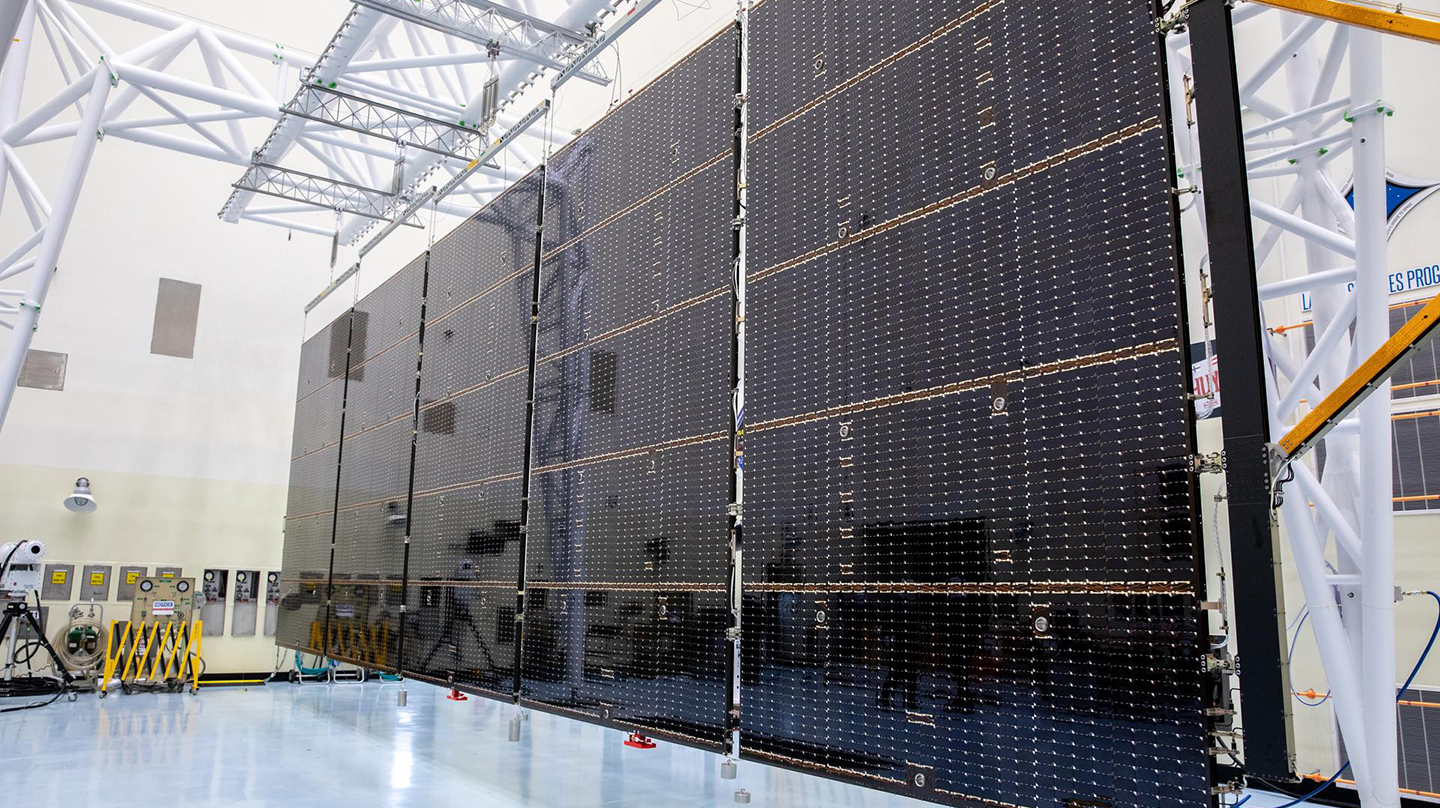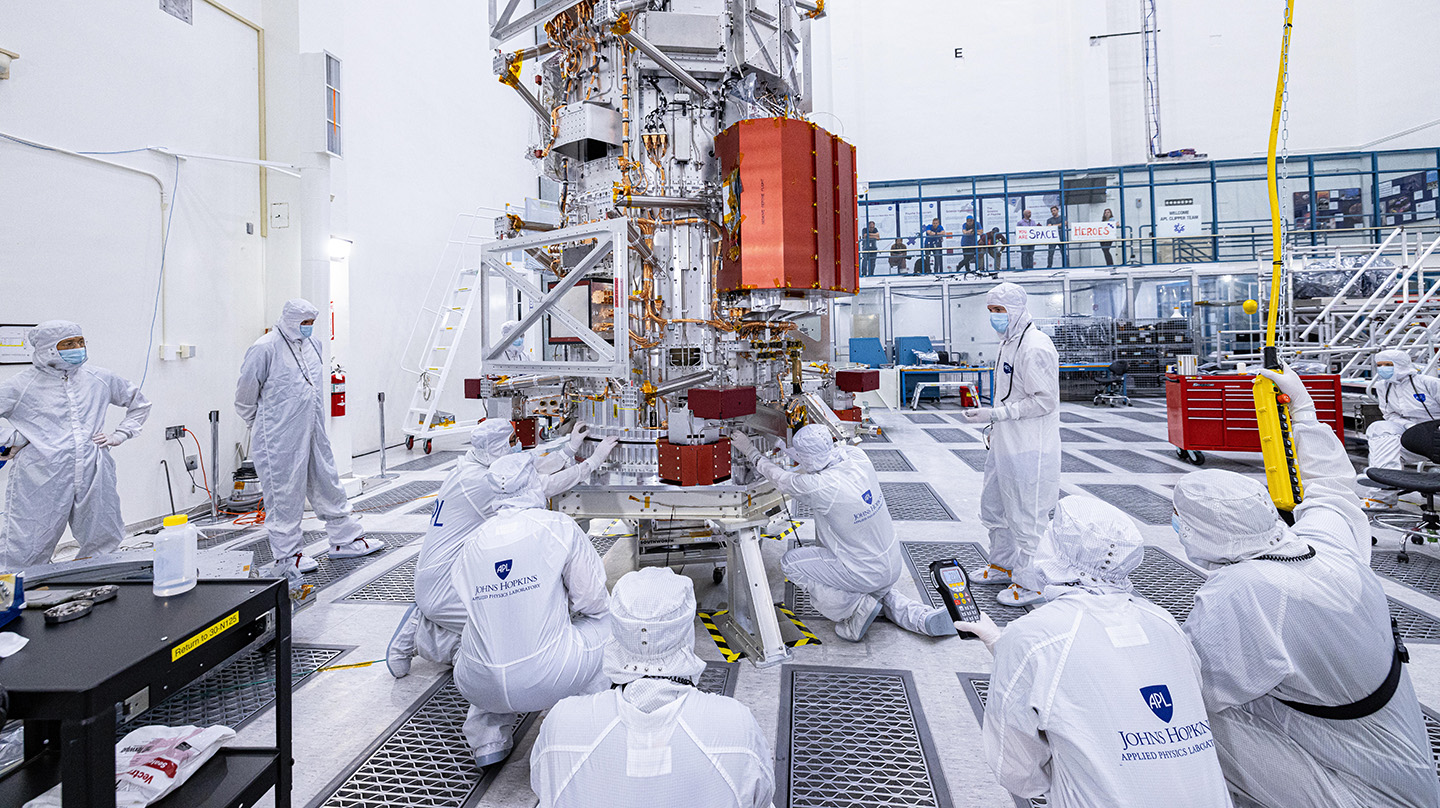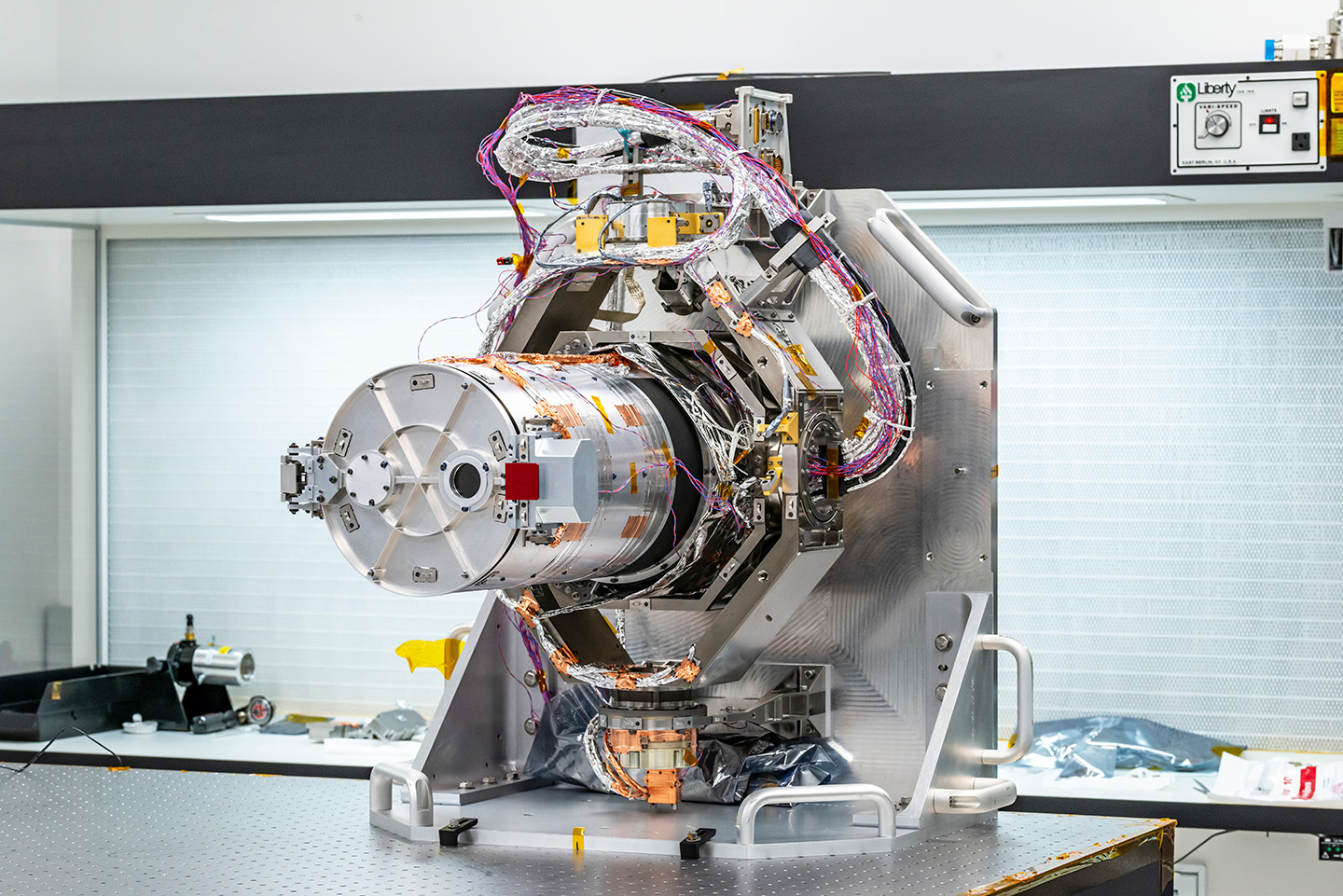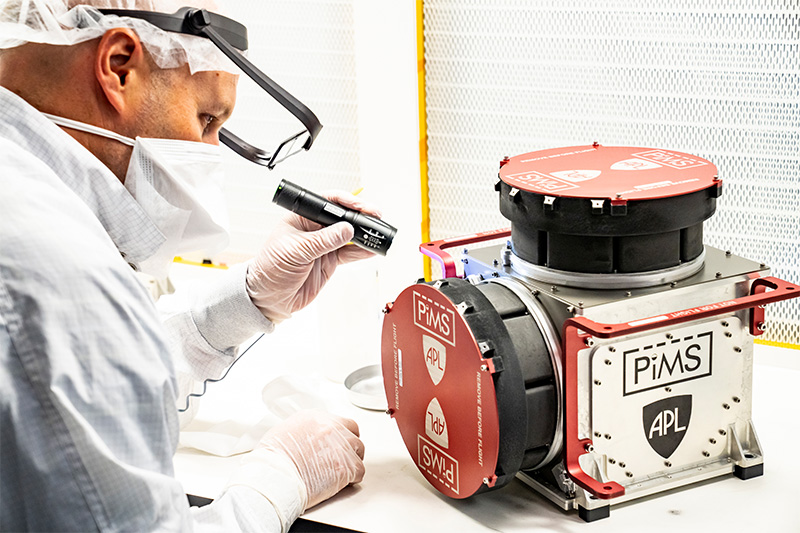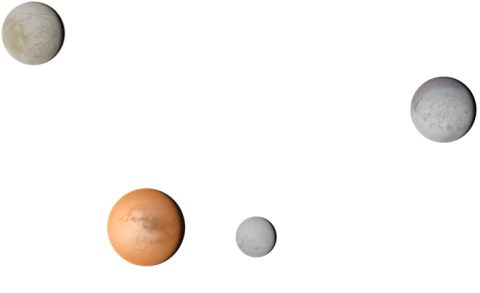The Mission
NASA’s Europa Clipper mission, a partnership between APL and the Jet Propulsion Laboratory in Pasadena, California, will perform more than 40 close flybys of Europa, zipping from about 1,700 miles (2,700 kilometers) to as close as 16 miles (25 kilometers) above the surface of Jupiter’s icy moon. These flybys will provide access to a diverse and widely distributed set of geologic terrains, providing data to constrain and test geophysical and geochemical models of the ice shell and ocean.
Over a mission planned for at least 3.5 years, the spacecraft’s instruments will map more than 80% of Europa’s surface at resolutions from as high as about 300 feet (100 meters) per pixel to as low as 3 feet (1 meter) per pixel. They’ll determine the presence and depth of a subsurface ocean in globally distributed regions, determine the chemicals present on the surface and, potentially, fly through an erupted water plume.
While not meant to find life itself, the mission will help determine what ingredients for life are present and answer questions about how they interact with one another to create a habitable world.
Spacecraft and Instruments
The Europa Clipper spacecraft spans about the size of a basketball court (82 feet or 25 meters) between the tips of the solar-array wings. The magnetometer is mounted on a 28-foot (8.5-meter) extendable boom, and the antennas of the radar instrument are mounted on the solar panels. Other instruments are mounted either on a deck facing the surface or ram direction during the Europa flybys. The spacecraft is equipped with a 10-foot (3-meter) dish antenna for Earth communication.
Europa Clipper will be outfitted with nine instruments, enclosed in an aluminum-titanium vault to shield them from Jupiter’s radiation. These instruments include APL-built cameras that will capture parts of Europa in unprecedented resolution and provide 3D images of the surface; spectrometers — including one built by APL — that will determine the chemical composition of both the surface and Europa’s thin atmosphere; an ice-penetrating radar instrument to determine the thickness of the moon’s icy shell; and a magnetometer that will help determine how deep and salty Europa’s subsurface ocean is. Europa Clipper is also equipped with an APL-built charged particle detector, which will investigate the interactions between Europa and particles in Jupiter’s magnetosphere that can alter the moon’s surface processes and characteristics. Finally, the APL-built telecommunications system will enable gravity and radio science.
